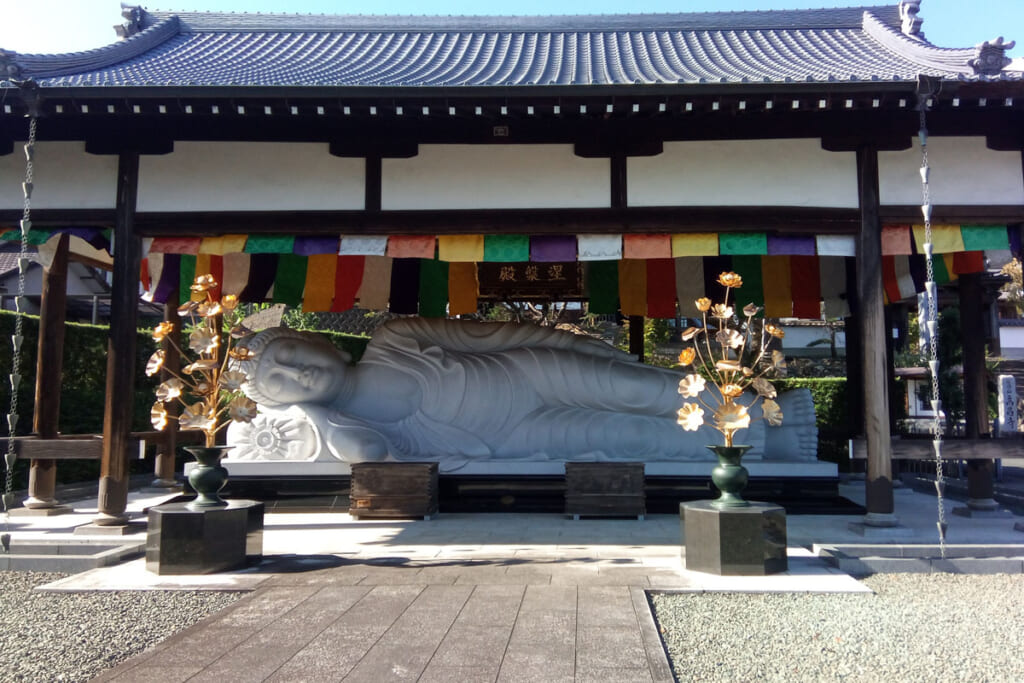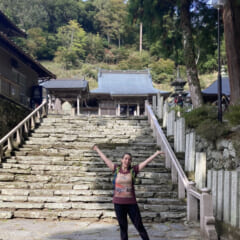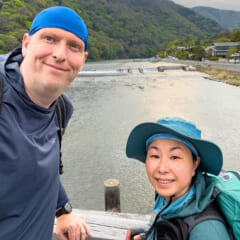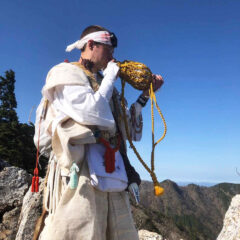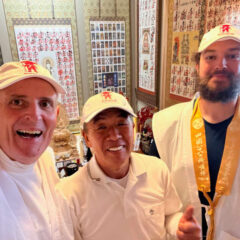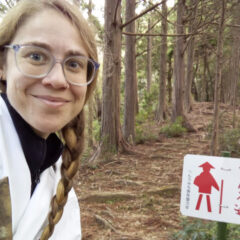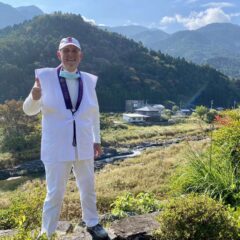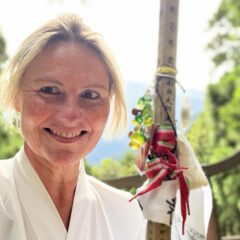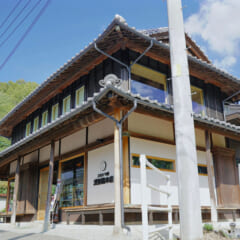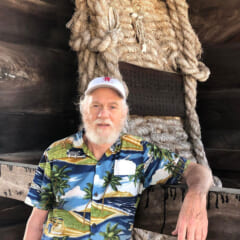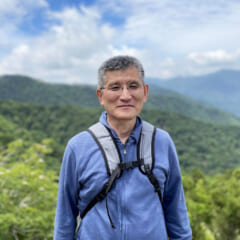わたしの四国旅 (2) 旅した人:マルタさん
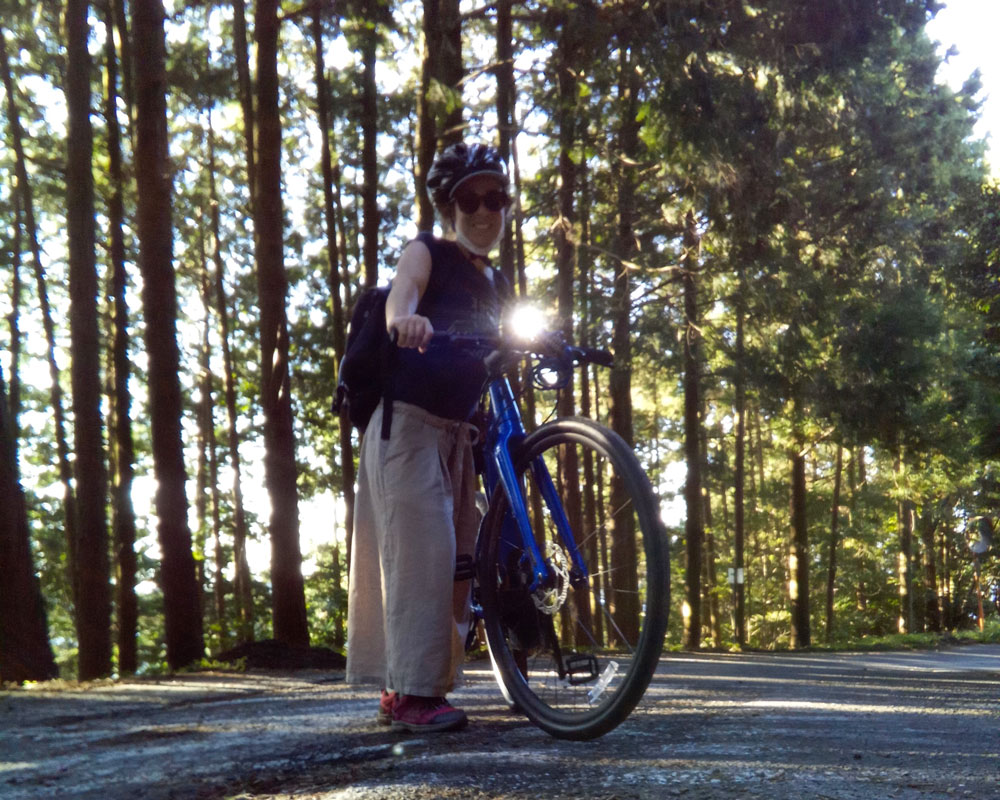
![]() Marta Nunes, Portugal
Marta Nunes, Portugal ![]() Course.6 Ōzu and Uchiko Nostalgic Townscape Walking Course
Course.6 Ōzu and Uchiko Nostalgic Townscape Walking Course
Day 1 – Forest baths and culture. Uwa-cho – Ozu
Right after visiting temple Meiseki-ji the forest bathe begins. This walk surrounded by the stillness of trees makes it a nice smooth transition from a sacred place to Uwa-cho’s old town, Unomachi. The buildings from Edo and later periods give that old town feel.
Since I was using the luggage service of the ryokan where I was going to stay that night, I could explore the town with only my lightweight backpack.
Although I already knew about some interesting spots, I went to the tourism office for recommendations. There are a few museums and schools to visit around and what got me curious was the Uwa Museum of Folk Tools (Uwaguminkan).
It is a very well curated museum from which I learned a lot about the daily lives of Uwa’s people from previous periods. The everyday objects speak for themselves and document Japanese culture in a captivating way.
Amongst hundreds of utensils, tools, signs and whatnot I found an interesting picture of ohenro pilgrims from the Showa period. The dioramas in one of the rooms also feature the passing pilgrims interacting with locals. The ticket is also valid for the Kamei school which is just opposite the museum.
I went for lunch at Ikedaya, a gallery that was once a sake brewery. I was very pleased to see a menu with local ingredients and a vegetarian option – “plenty of tofu” was the set menu called. There were also fish and meat options.
The gallery has a nice atmosphere, sounds of bossa nova and books here and there. I was very satisfied, and I really had plenty of tofu and a nice chai with soy milk.
(Note for vegetarian: some side dishes might use tare or daishi which contains fish, ask before ordering)
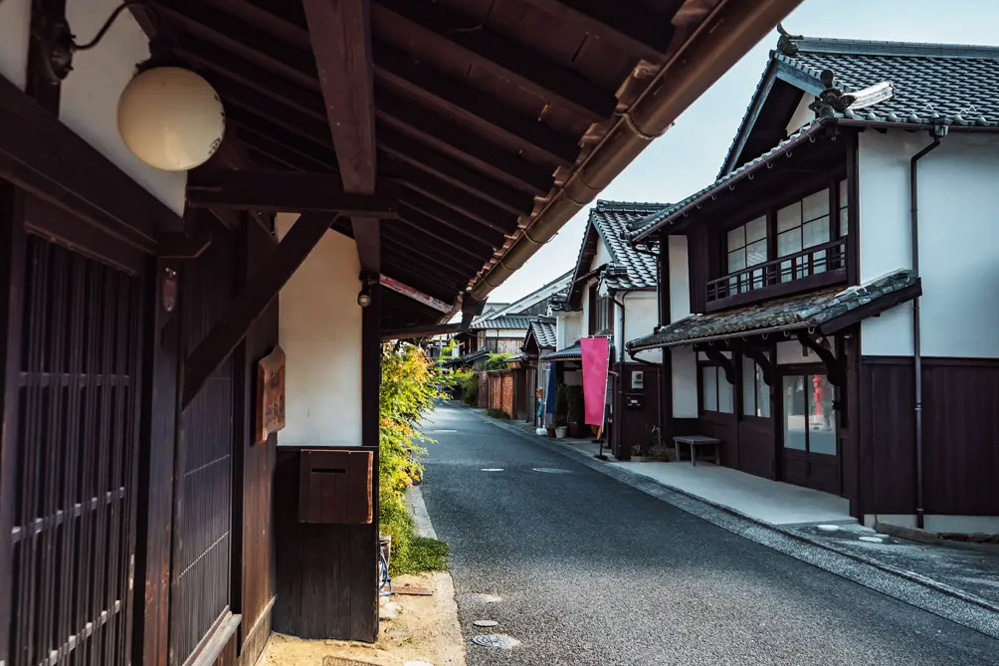
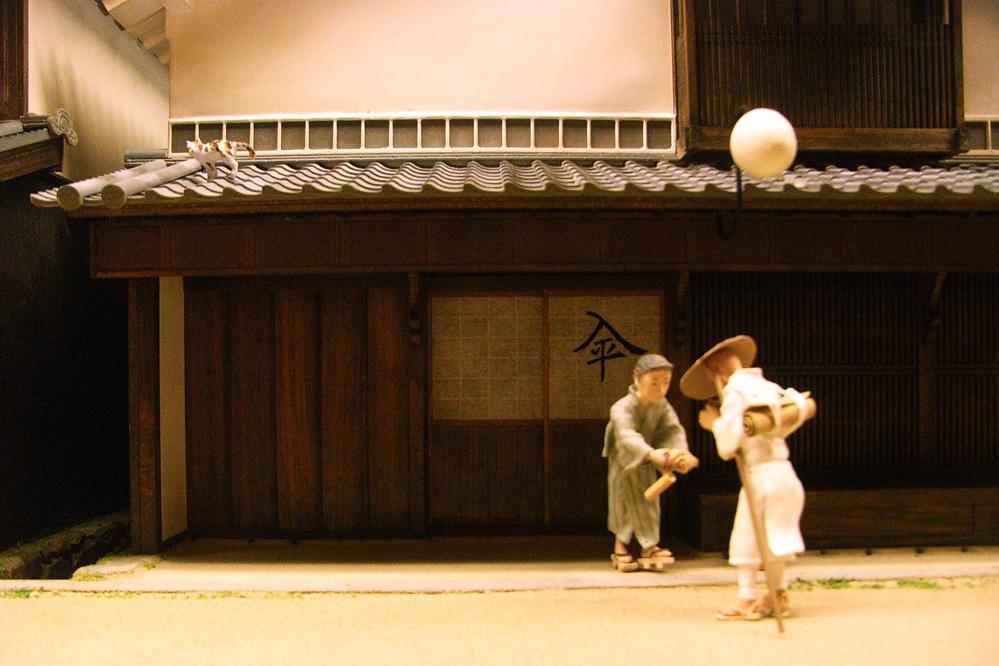
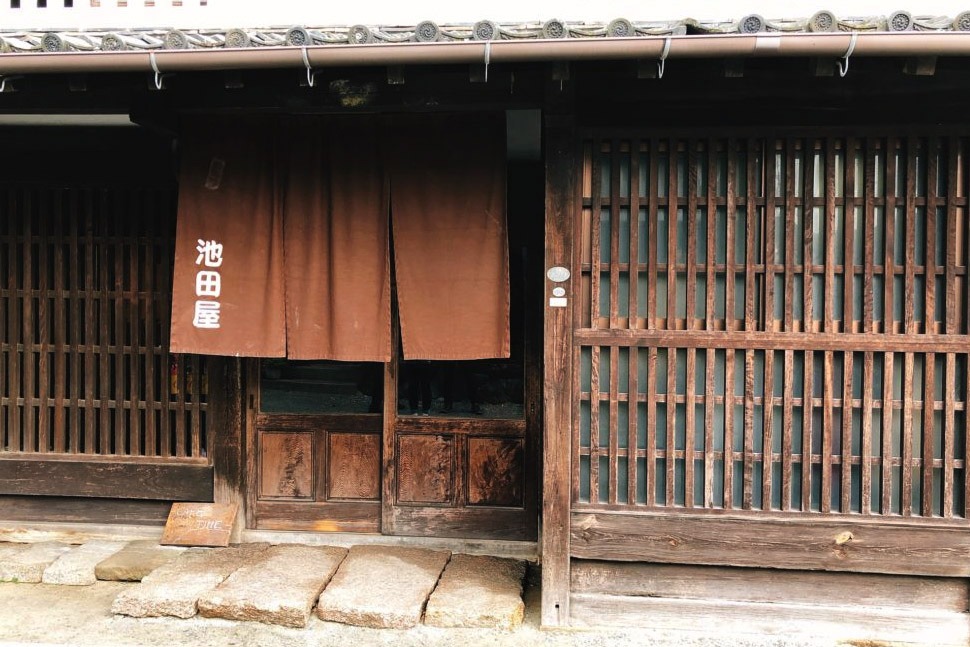
The Shikoku trail continues mostly through the busy national road. Whenever I could go on the side streets, I had a quieter walk and the chance to enjoy what season has to offer. There were a lot of red spider lilies (higanbana) and full-grown chestnuts.
After a flat easy 9km I got to Kokemushiro Moss Garden where I could have a very peaceful break at a wooden cafe. This garden of tall trees, vivid green moss beds, a water mill and many nice little details is well worth the detour of only 700m. The weather was pleasant, so I sat at the terrace enjoying a bowl of matcha green tea and matcha chiffon cake.
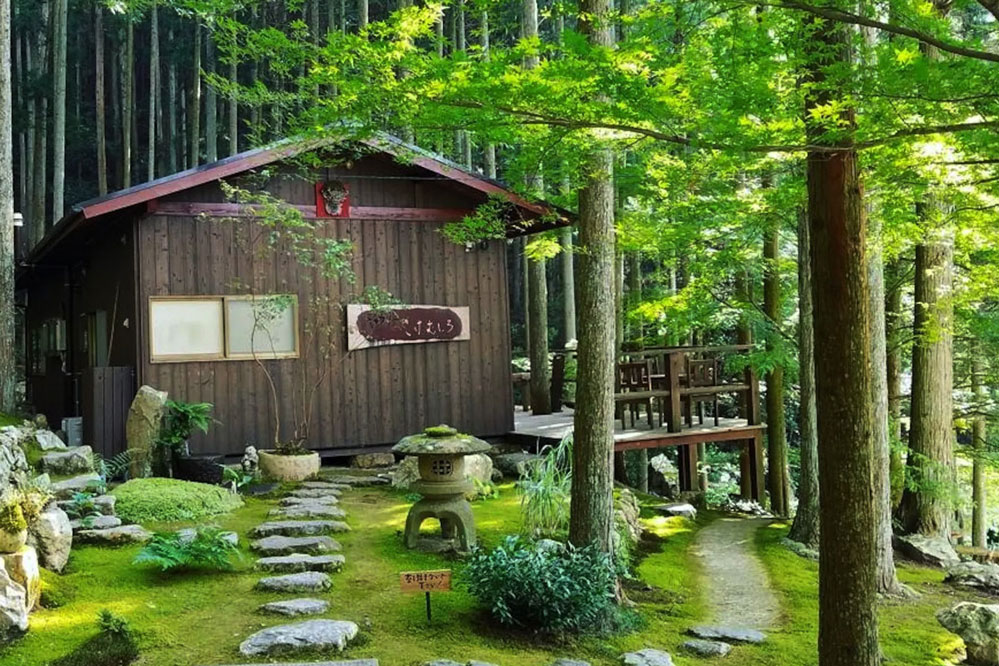
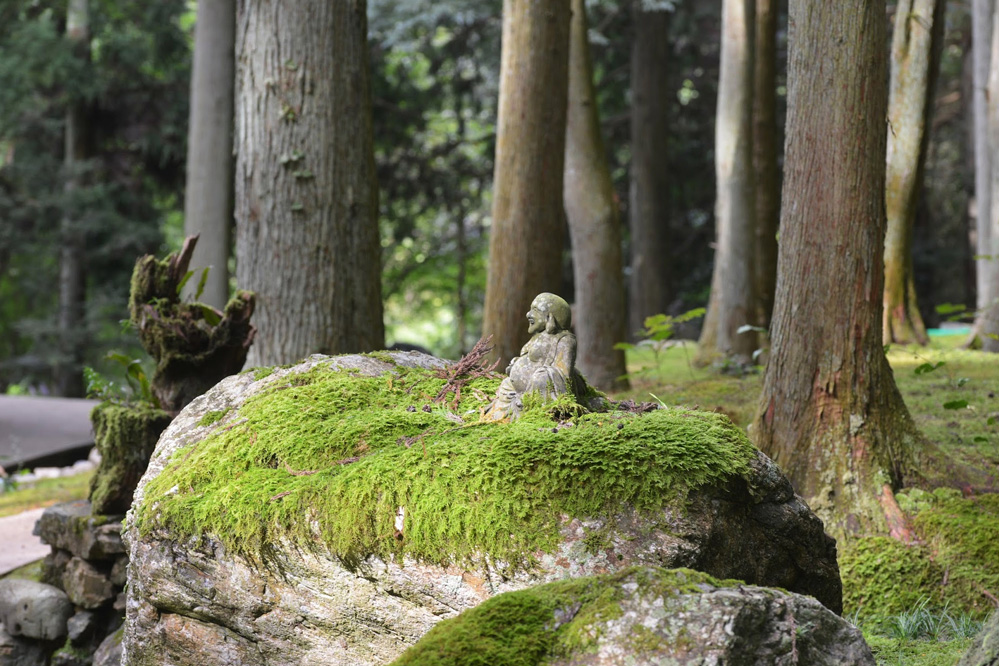
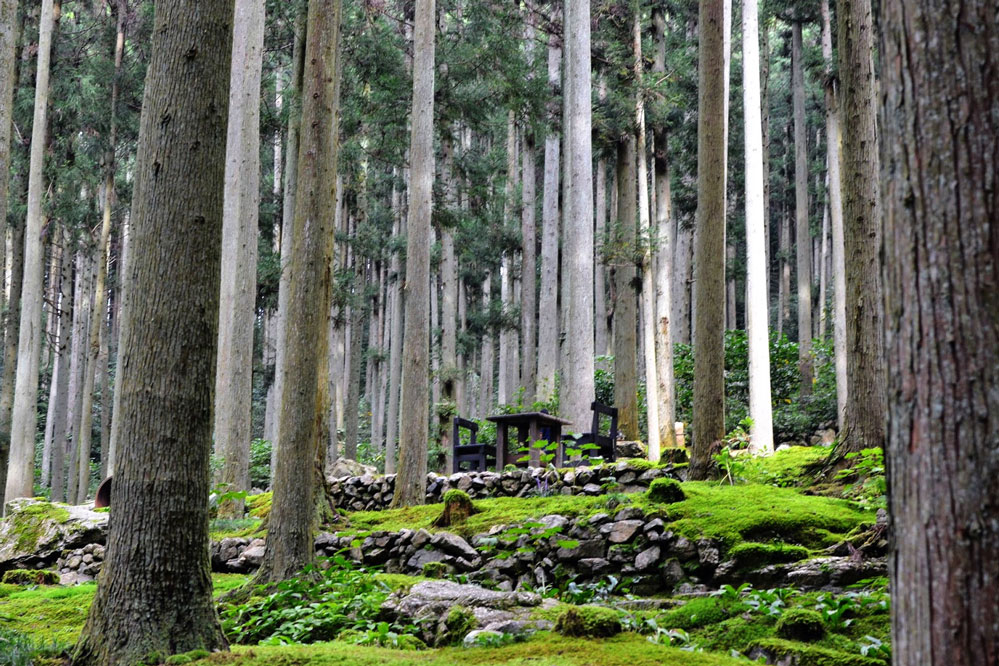
I took the bus to Ozu and checked in at Tokiwa ryokan, a place where many pilgrims stay. The owner Mr. Fujie welcomed me, and we had a friendly chat while checking in. He’s very knowledgeable and willing to share or answer any questions about Shikoku. Tokiwa was an ideal place to rest. There are two carp ponds, inside and outside, and the tatami room is quite nice in the evening, particularly for those who like to mingle with other pilgrims or guests to share the experiences of the day. It’s possible to have dinner at the ryokan but I’ve booked it as accommodation only.
I went to Miyuki, a teppanyaki restaurant, which was only a 2-minute walk away. The staff promptly accommodated me with a seat by the counter and asked if I wanted an English menu. I ordered the chanpon without meat which they gladly adjusted for me. The portions are large and very tasty here. One of the perks of seating at the counter is that you can see all the action.
Day 2 – Another cultural day and mountain temple. Ozu – Shussekiji
I left my backpack at the ryokan and carried only the day’s essentials. This luggage service is particularly useful because I wanted to explore Ozu in the most lightweight way possible and give my back a break.
I began the day by going to the castle and purchased the combined ticket for the spots I have planned to visit in Ozu, also known as the Little Kyoto of Iyo.
As I was walking towards Garyu Sanso I was surprised to see koi carps happily swimming in the waterways of Ohanahan Street. Paved with cobblestones, this street has a distinctive atmosphere with storehouse buildings from the Meiji to the Taisho periods.
I left my backpack at the ryokan and carried only the day’s essentials. This luggage service is particularly useful because I wanted to explore Ozu in the most lightweight way possible and give my back a break.
I began the day by going to the castle and purchased the combined ticket for the spots I have planned to visit in Ozu, also known as the Little Kyoto of Iyo.
As I was walking towards Garyu Sanso I was surprised to see koi carps happily swimming in the waterways of Ohanahan Street. Paved with cobblestones, this street has a distinctive atmosphere with storehouse buildings from the Meiji to the Taisho periods.
At Garyu Sanso, a villa of the wealthy merchant Kouchi Torajiro, I was guided by an English-speaking volunteer guide. I was amazed not only with the beauty of the house and garden but also with the intrinsic details. The buildings are a perfect marriage of highly skilled techniques of architectural structures and the elegance of the philosophy of the way of tea. This scenic place along the Hiji river took 10 years to design, 4 years to build, with 9,000 manpower. That alone is quite impressive.

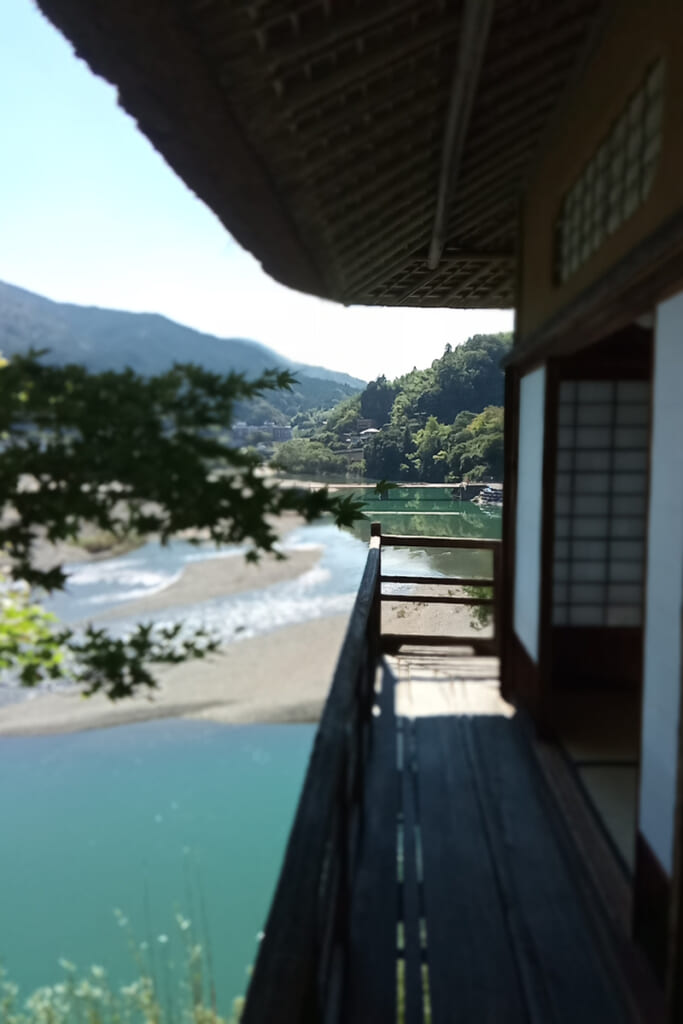
Not far, just a few minutes away is Bansenso, the former Matsui’s residence, built in the Taisho period. It consists of a wooden modern house built on a steep slope on a hill also overlooking the Hiji river. Although the architecture is Japanese, the furniture was imported from Southeast Asia since the owner had a trading company in the Philippines. I was guided in Japanese but there are English pamphlets available.
I made a quick stop at the machi no eki Asamoya to check the shop and buy a souvenir. I wanted to go to the teishoku restaurant next door Bunaburaya but it was their day off. A few months back I had a very delicious meal there. So, remember to check schedules when you make plans!
Instead, I went to Saoya, a teppanyaki restaurant owned by an old friendly couple and had okonomiyaki for lunch. It was very literal to the meaning of “okonomi” and I could choose the toppings “as I like it”. I also ordered take out, yakisoba for dinner.
After a quick stroll around town, I went to Ozu’s tourism office by the station to rent an e-cross bike. They usually have bicycles available but it’s possible to book them. I found out that if the plan is to cover many of the spots around Ozu, renting a bicycle first might be the best option.
As the goal was to stay at Shusseki-ji, the 7th bekkaku temple, renting an e-cross bike brought many advantages, especially reducing time and effort.
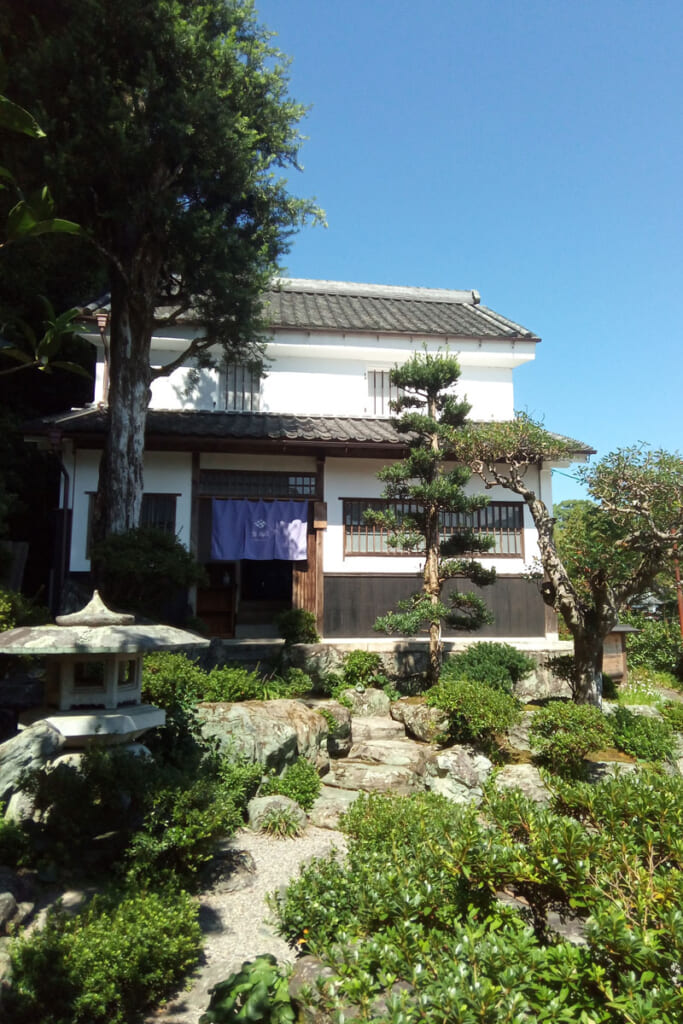
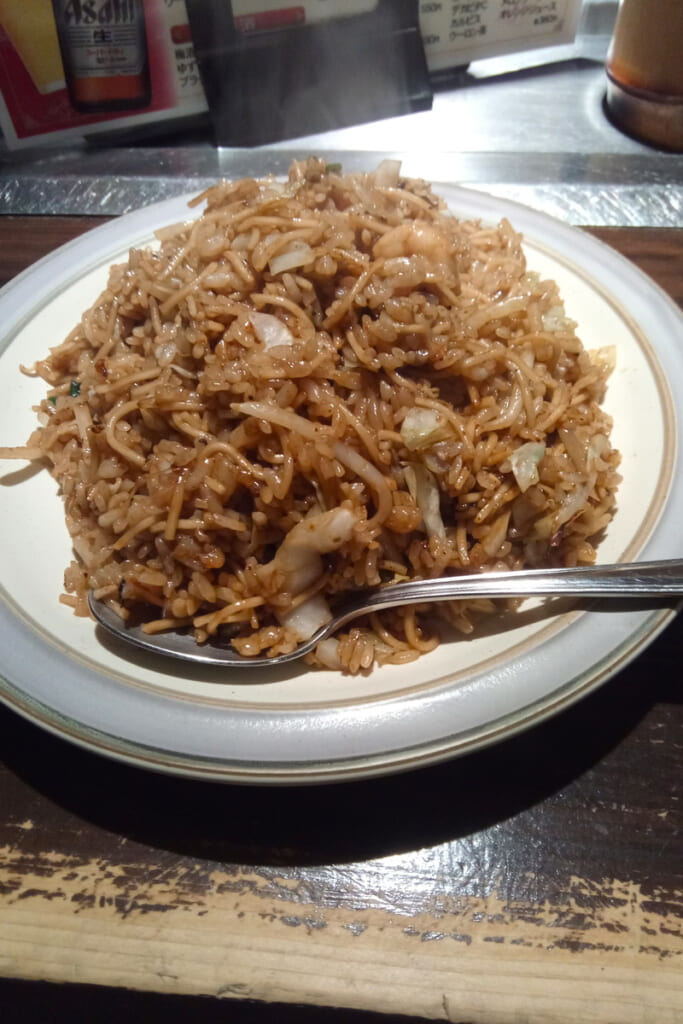
It’s quite a stretch to go all the way up to the top of the mountain but it went smoothly considering the 812m of elevation gain. It was a hot day so I did several small breaks mostly for water and to catch breath.
It’s a mountain road so I was ready to find steep hills and blind curves. Also, part of it is not maintained like city roads are so I was careful with branches, stones and holes. There are clear signs pointing the way up to the temple. It took me 2 hours to reach Shusseki-ji from the tourism office.
I reached the temple exactly at 5pm when the temple’s office was about to close. I was welcomed by the chief priest who offered to charge the e-cross bike and showed me the room and other amenities.
Just before dinner I did my worship routine. From the top the views are incredible and it’s possible to see the the Ishizuchi mountain range and the islands of the Iyonada.
I stayed comfortably on a futon in a big tatami room. The bath and restroom have been refurbished.
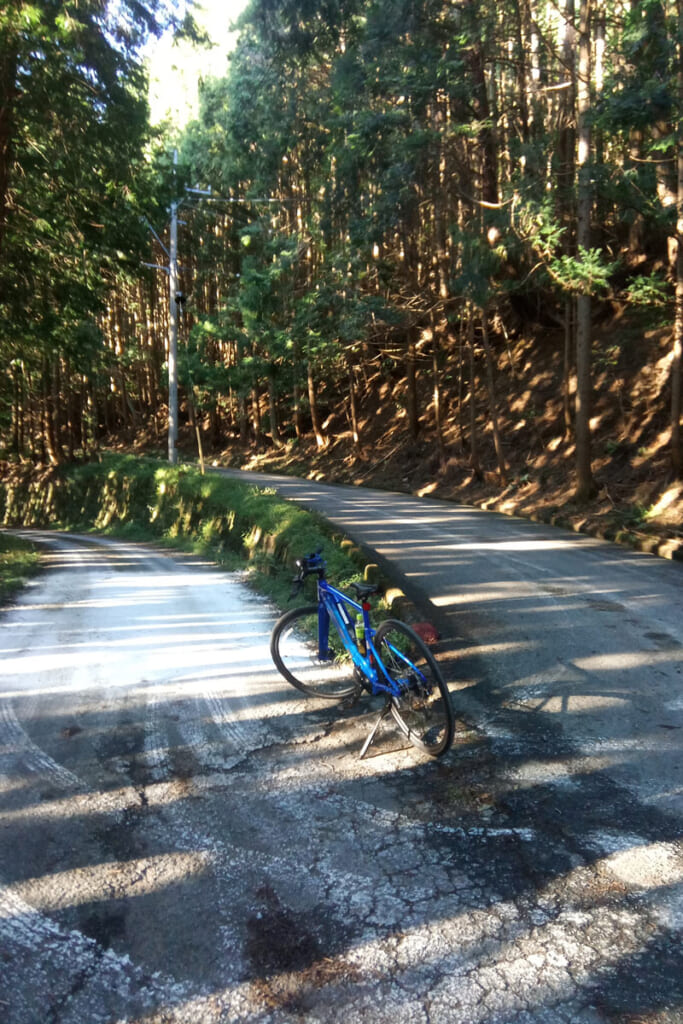
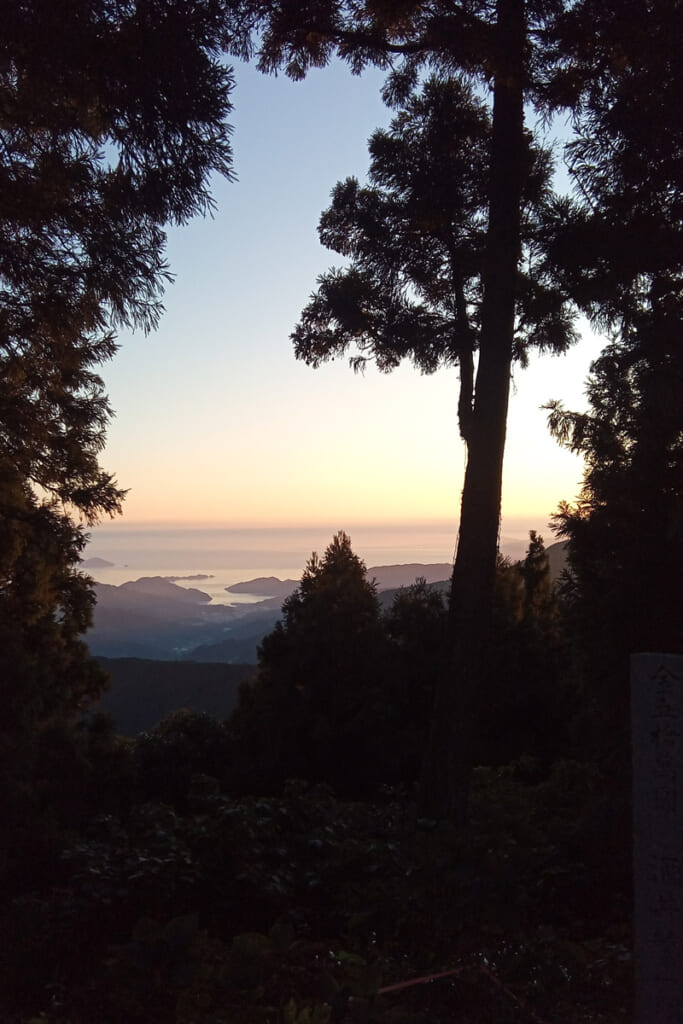
Day 3 – Morning ritual, strolling. Shussekiji – Uchiko
The day started early to attend the goma fire ritual (gomataki). Looking out the window from my room, the tall lantern and trees and a foggy dawn reminded me that I was at an ancient mountain temple with a history of 1,300 years.
I met the chief priest at 6am and followed him to the goma hall where he performed the ritual. The gomataki was introduced by Kobo Daishi so it is unique to the Shingon sect. It involves burning wooden plates with prayers written in front of the Buddha.
Afterwards, the chief priest was kind enough to show around the temple, including a remarkably large room of 100 tatami with no pillars supporting the ceiling. Then I followed him to the hondo and daishido where he placed incense in front of the images. He also explained many details about Kobo Daishi’s life and the temple’s main image, the Thousand-Hand Kannon which can be seen once every 50 years.
After asking for the temple’s stamp (nokyo) and recognizing the hospitality, I cycled my way back to Ozu. The very same road that led me up took me about one hour and half down back to the tourism office to return the bicycle. I stopped a few times for the fresh air, smell of trees and views, especially the beautiful sea of clouds over Ozu.
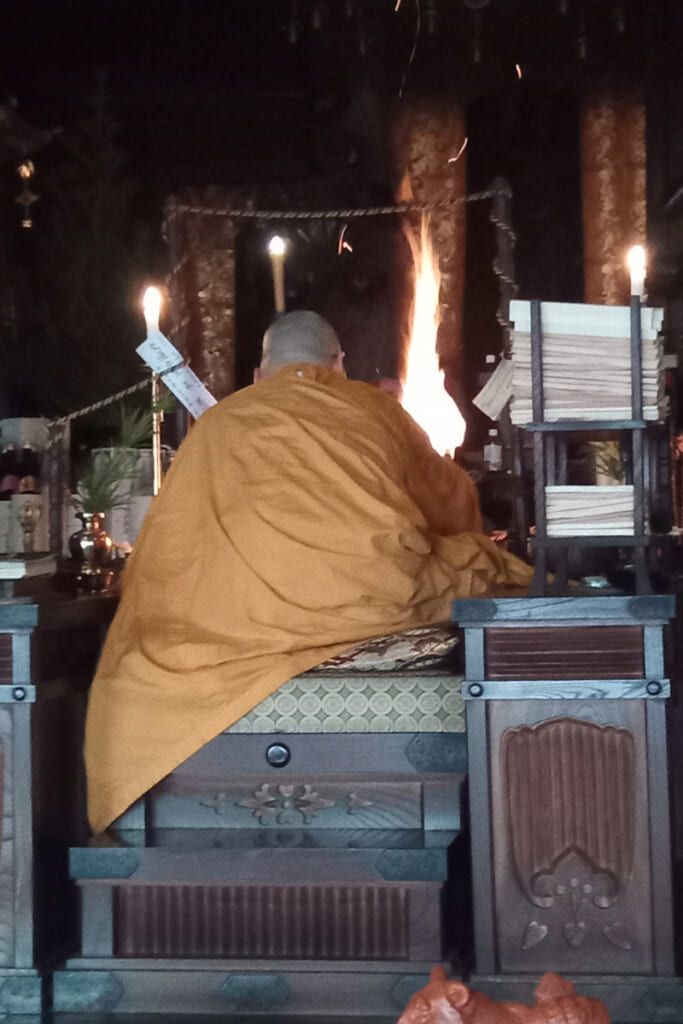
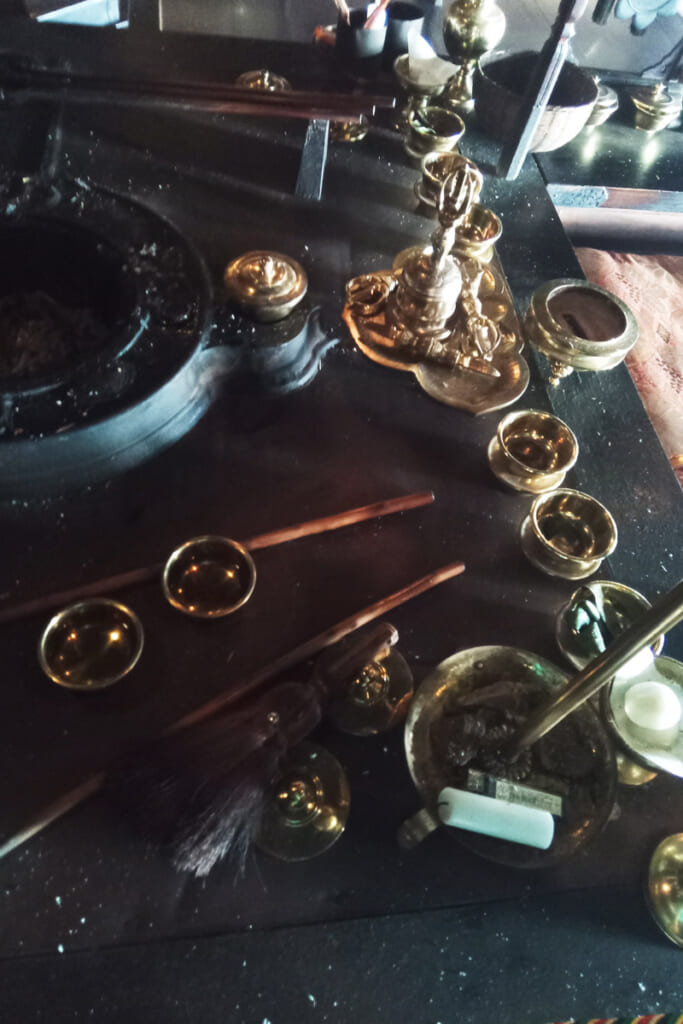
When I reached Uchiko I was ready for lunch. I had the popular sea bream rice (taimeshi) at Rinsuke. After just a few minutes of wait I was shown a seat by the counter. Taimeshi was fresh and exceeded my expectations.
With a happy tummy off I went strolling the Yokaichi, Gokoku District where the streets are lined with large, beautiful houses of wealthy merchants. During the Meiji and Taisho periods, Uchiko was a center of high-quality white wax and paper productions which brought a lot of prosperity. I could learn how these industries flourished and the wax making process at the Kamihaga Residence. The most curious fact was that the Uchiko wax is vegan as it comes from a berry. The wax museum displays information in English and Japanese.
The Honhaga Residence can only be viewed from the outside but features a pleasant garden also worth checking out. The Honhaga family was Uchiko’s first and primary wax producer that made Uchiko wax known internationally. The wax and specialty shops were interesting and also reflected the history of the town.
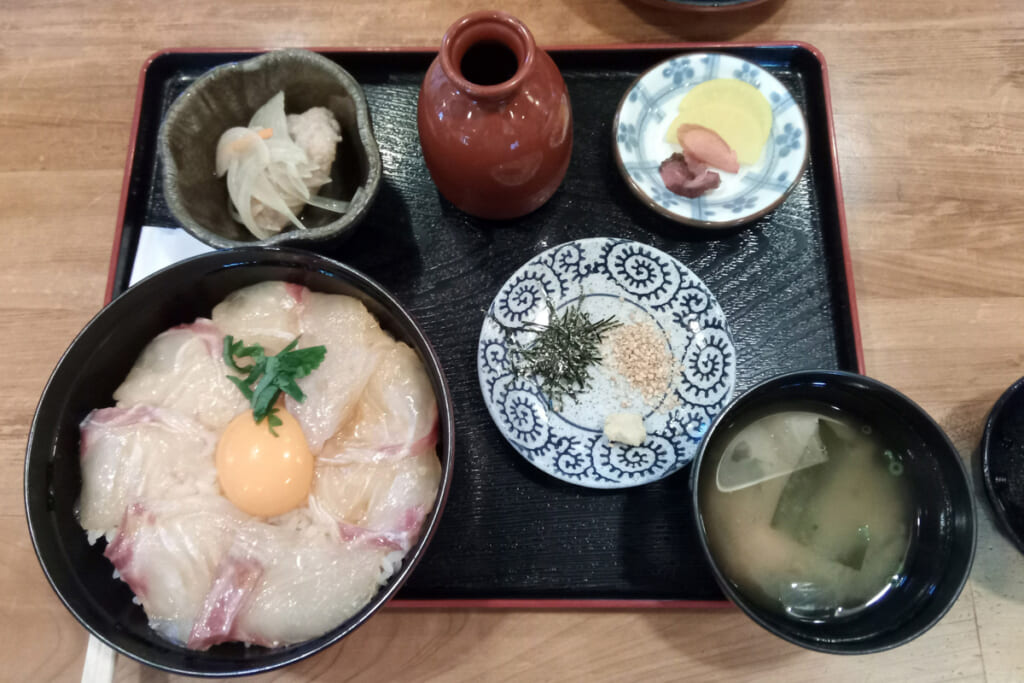
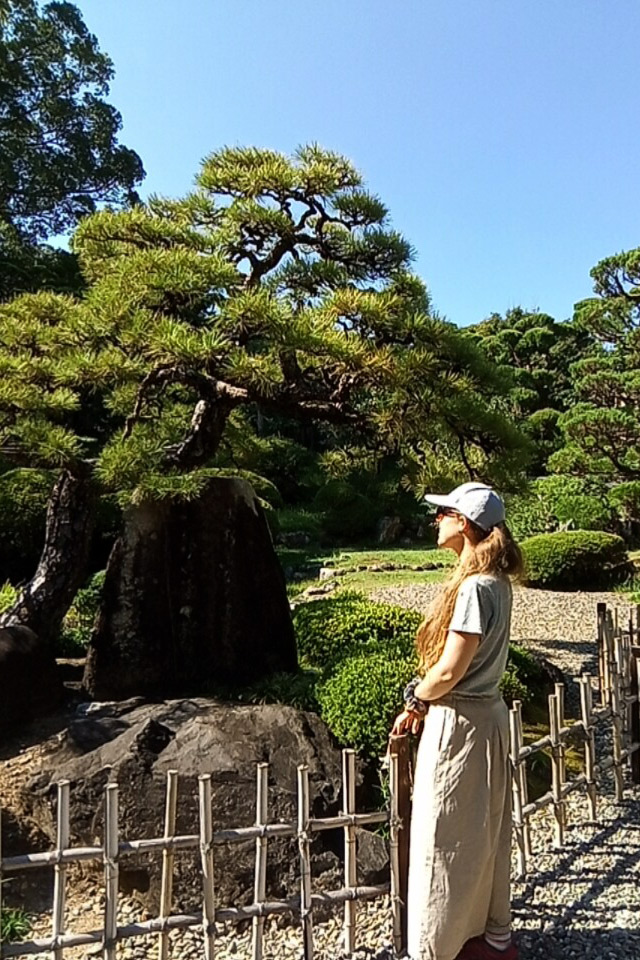
At the north end of the district there is a big reclining Buddha in front of Kōshō-ji, a peaceful spot that deserves a visit.
Uchiko-za was in my plans but had a rakugo show so I could only see it from the outside which was worth a look just for the architecture that remains untouched since it was built.
At the station, just before taking the train to Matsuyama, I got my luggage back from Mr. Fujie.
